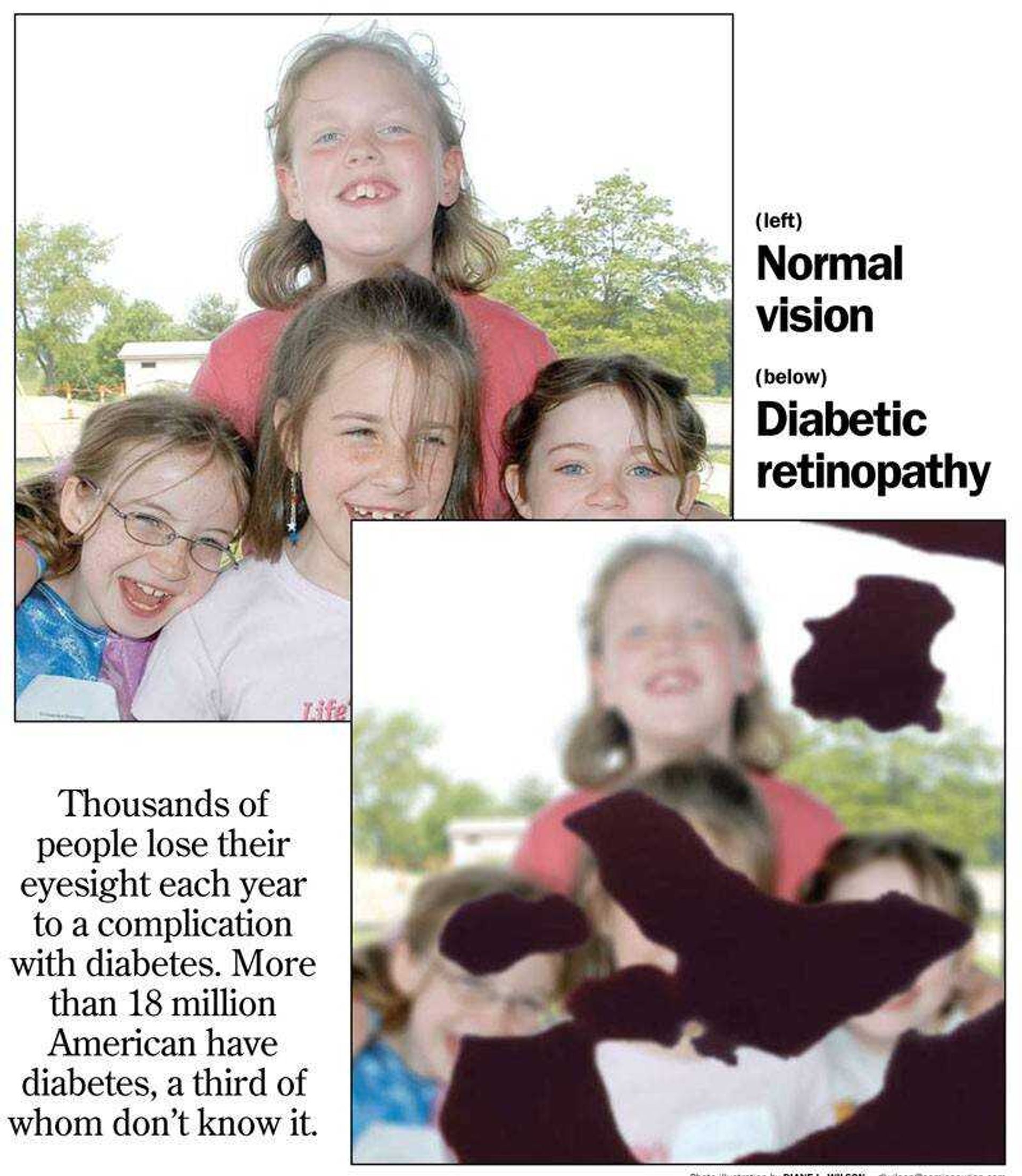According to the Missouri Department of Health and Senior Services, more than 18 million Americans suffer from diabetes -- and nearly one-third of them do not know it.
Diabetes affects many parts of the body and can lead to diabetic retinopathy, which is the most common diabetic eye disease and a leading cause of blindness in American adults. It is caused by changes in the blood vessels of the retina.
A recent survey by the American Optometric Association revealed while more than 60 percent of adults know Type 2 diabetes is detectable through a comprehensive eye exam, only 38 percent of adults, who do not wear glasses or contacts, have been to an eye doctor in the last two years. Diabetes is the number one cause of acquired blindness, according to the association.
Adults suffering from Type 2 diabetes have a 50 to 80 times greater risk of becoming blind compared to the rest of the population, according to Dr. Scott McDougal, an optometrist at Regional Eyecare Center, Inc. in Cape Girardeau.

"Sometimes an eye exam can pick up the early signs of diabetes before a person experiences any other signs," McDougal said.
An estimated 12,000 to 24,000 people who lose their vision yearly because of diabetes complications that can often be prevented through early detection and timely treatment, according to the American Optometric Association.
Physicians recommend individuals, who are at high risk for diabetes or have known diabetes, need to have regular dilated eye exams each year.
"Fortunately, in nearly all cases, diabetic retinopathy can be diagnosed during a dilated eye exam in which drops are put into the eyes," said Dr. Robert Layman, chairman of the American Optometric Association's Diabetic Eye Care Project Team.
Cape Girardeau optometrist Dr. Charles Cozean said blindness in diabetic patients occurs when the retina detaches.
One in every three of Cozean's patients is diabetic. He's been practicing for about 40 years in Cape Girardeau, and hasn't seen a diabetic patient go blind in at least 15 years.
"Part of the reason patients aren't going blind from diabetes is that we can make the diagnosis a lot earlier with new machines," Cozean said. "It's not uncommon that we can detect diabetes in a walk-in patient without them knowing it from their physician."
Depending on the stage of person's diabetes, there's several methods of treatment. Physicians recommend the best treatment for diabetes is diet and exercise.
"Managing your blood sugar levels can cause a huge improvement in your vision," McDougal said.
He said there's a new medication that's awaiting Food and Drug Administration approval called Arxxant, which may help reduce the occurrence of vision loss in patients with diabetic retinopathy.
"Anyone who has a diagnosis of diabetes, regardless of age, must see an eye surgeon," Cozean said.
jfreeze@semissourian.com
335-6611, extension 246
---
Food critic creates site for diabetics
Sean Hughes was 16 when he was diagnosed with Type 1 diabetes.
After his diagnosis, Hughes realized he had a tremendous challenge ahead of him -- learning what foods he could incorporate into his diet.
When he was first diagnosed, he didn't know which foods were not only healthy but tasted good.
Last January, the 28-year-old launched the Web site www.diabeticfoodcritic.com to provide diabetics with a guide of foods to eat.
While the Web site features foods people with diabetes can buy at the grocery store, it is not intended for medical use, Hughes said.
"It's purpose is a food guide for people with diabetes," he said.
The Web site lists a variety of foods to try, and Hughes rates the products using a scale of 100 to 500, with a 100 being the best rating a product can receive and 500 being the worst. It also has a spot for visitors to provide suggestions and comments about what foods should be reviewed.
-- Southeast Missourian
Connect with the Southeast Missourian Newsroom:
For corrections to this story or other insights for the editor, click here. To submit a letter to the editor, click here. To learn about the Southeast Missourian’s AI Policy, click here.







